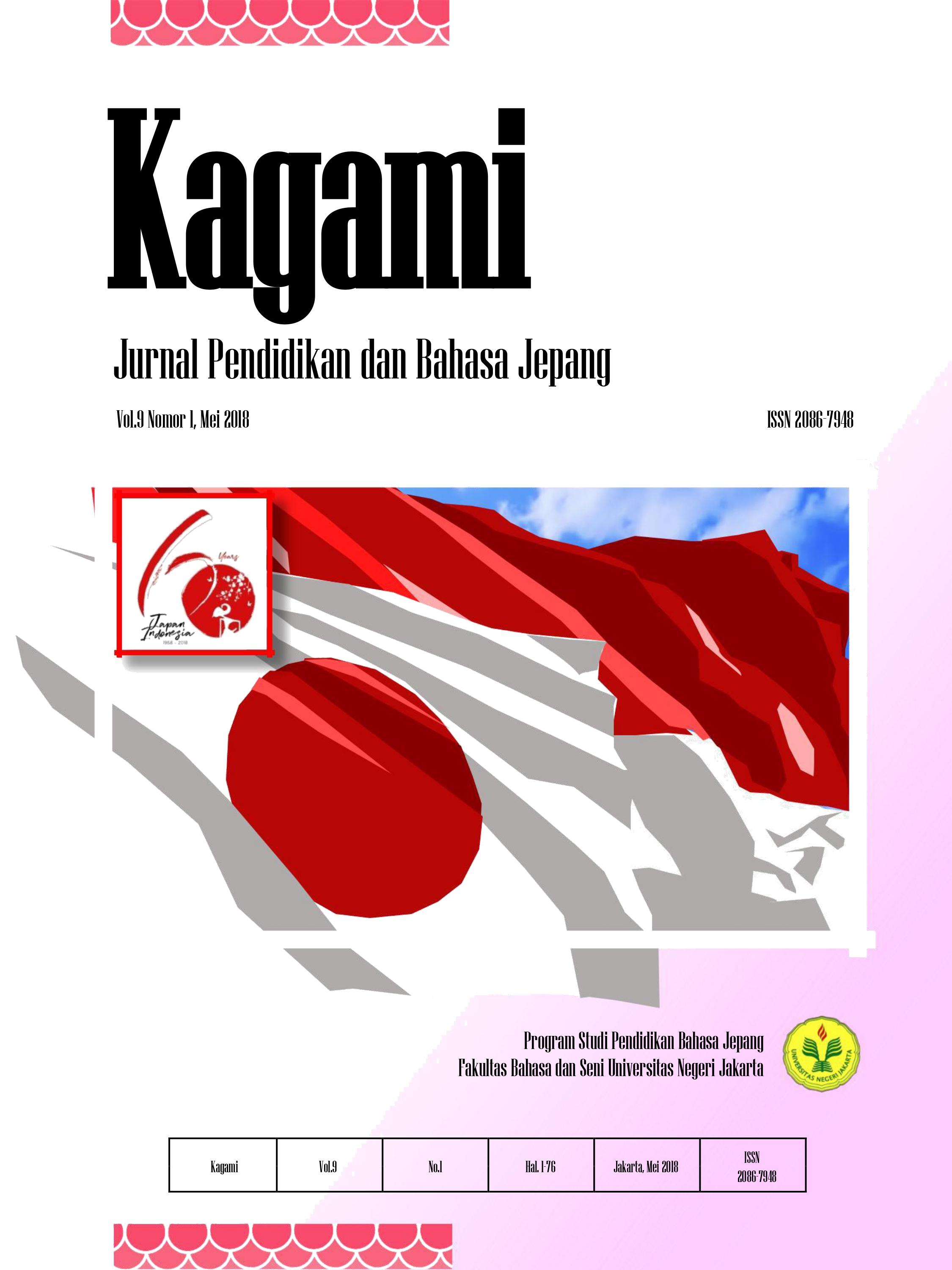EFEKTIVITAS MEDIA PEMBELAJARAN (KARTU KANJI & FLASH CARD) TERHADAP KEMAMPUAN MEMBACA KANJI
Abstract
This paper is research report about the effectiveness of learning media (Kanji Card and Flash Card) in read kanji on the students of the academic year 2017/2018 Japanese Language Education Program Faculty of Languages and Arts State University of Jakarta. In written communication used in Japanese besides there are katakana and hiragana there are also kanji. But kanji is one of the most complicated aspects to learn for Japanese learners. Therefore, learning media is needed to facilitate the learners in understanding the kanji. One of the media that can be used in learning is the kanji card & flash card. Because the two learning media have advantages that is as easy to use, can be used at all levels of education, save time and cost and attract the attention of learners. The research method used is true experimental design with pretest-posttest control group design design. The sample was 62 students with the details of 32 students in class A as control class (using flash card) and 30 students in class B as experiment class (using kanji card). The research instrument used is the test of multiple choice questions and questionnaires. After analyzing the data, the result of hypothesis test that t-count is smaller than t-table (0,426 <2,000) with 5% significant level, hence Ho accepted and Hk rejected. So it can be concluded the use of learning media kanji card is not effective compared with flash card to the ability of read kanji. Based on the questionnaire, the student's response to the use of kanji card and flash card media felt suitable and fun when used during kanji learning. Students felt kanji card can improve the ability in kun-yomi and on-yomi reading while flash card can improve the ability to remember the meaning and example of kanji. Then the experimental class students feel less time in using kanji card, while in the control class students feel the time given enough to use a flash card.
References
Edizal. 2012. Kartu Kanji Bahasa Jepang. Padang: Kayupasak.
Fadhila, Ucu & Rasdiana, Dina. 2011. Panduan Praktis Mahir Berbahasa Jepang. Jakarta: PT. Tangga Pusaka.
Hatasa, Yukiko. 2003. Dainigengoshūtoku kenkyū e no shōtai (An Invitation to Second Language Acquisition Research in Japanese). Tokyo: Kuroshio Shuppan.
Indriana, Dina. 2011. Ragam Alat bantu Media Pengajaran. Yogyakarta: Diva Press.
Ingulsrud, John E & Kate Allen. 2009. Reading Japan Cool. United Kingdom: Lexington books.
Khairunisak. 2015. Penggunaan media kartu sebagai strategi dalam pembelajaran membaca permulaan:studi kasus di madrasah ibtidaiyah negeri rukoh Banda Aceh. Jurnal Pencerahan, Volume 9, Nomor 2, September 2015.
Naganuma, Naoe. 2007. Naganuma Naoe to NihongoKkyoiku. Japan: Kaitaku-sha.
Paradis, Michel., dkk. 1985. Neurolinguistic Aspects of the Japanese Writing System. Orlando: Academic Press.
Sadiman, Arif S. dkk. 2006. Media Pendidikan. Jakarta: Rajawali Pers.
Sato, Eriko. 2008. The First 100 Japanese Kanji. Tutle: Tokyo.
Shimizu, Yuko. 2010. “Kaigai Zaijuu no Youji-Jidou no tame no Kanji Kyouiku” dalam Nihongo Kyoushi no Tameni Jissen Kanji Shidou. Diedit oleh Hamakawa Yukiyo. Tokyo: Kuroshio Shuppan.
Sudarwan, Danim. 1995. Transformasi Sumber Daya Manusia. Jakarta: Bumi Aksara.




